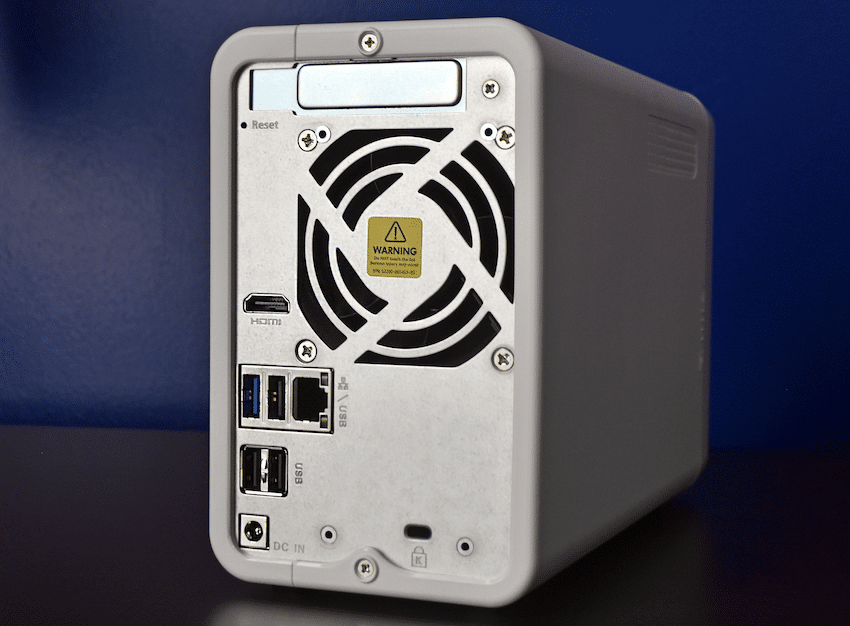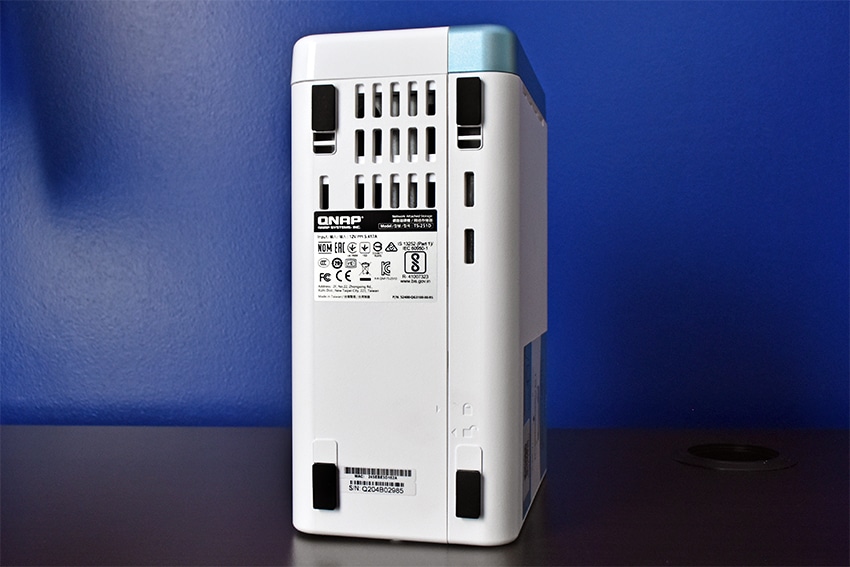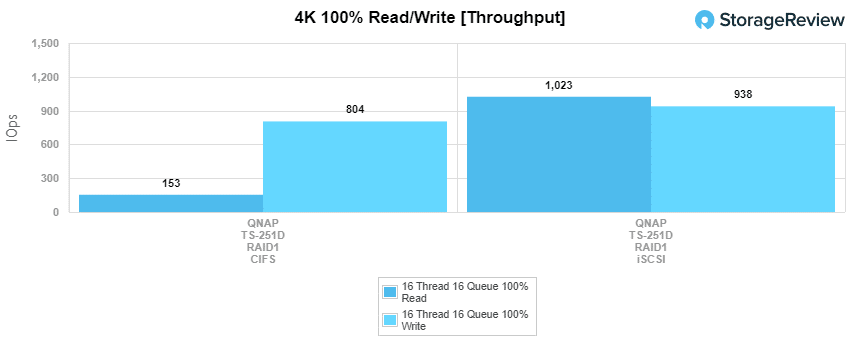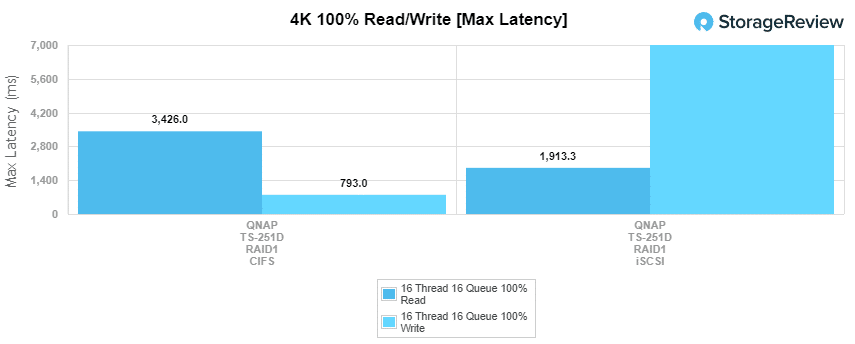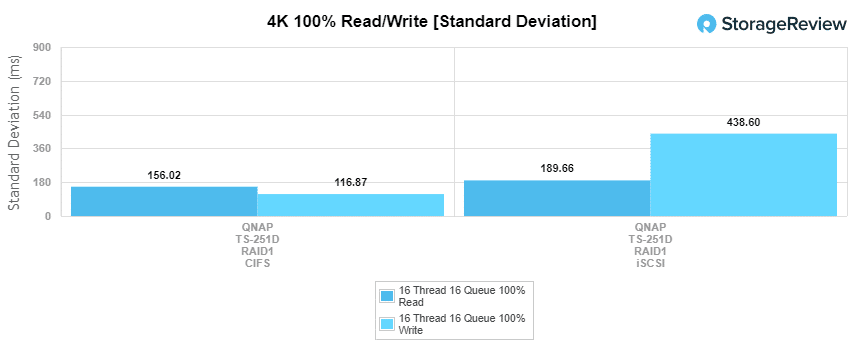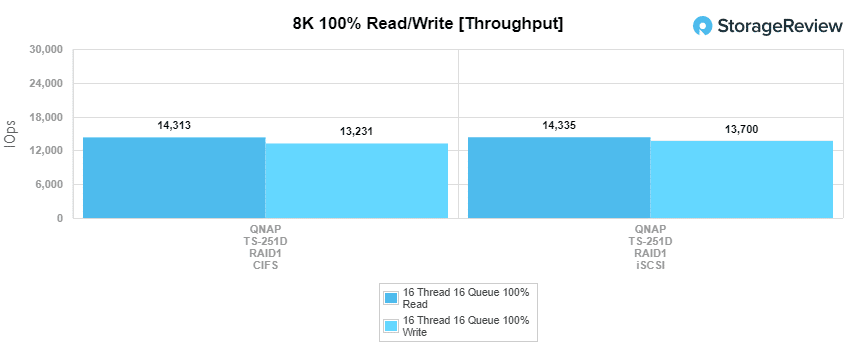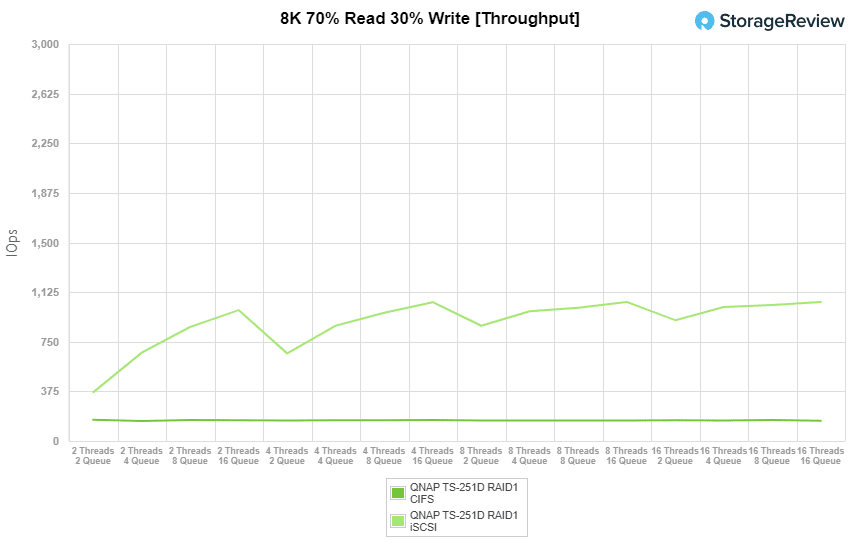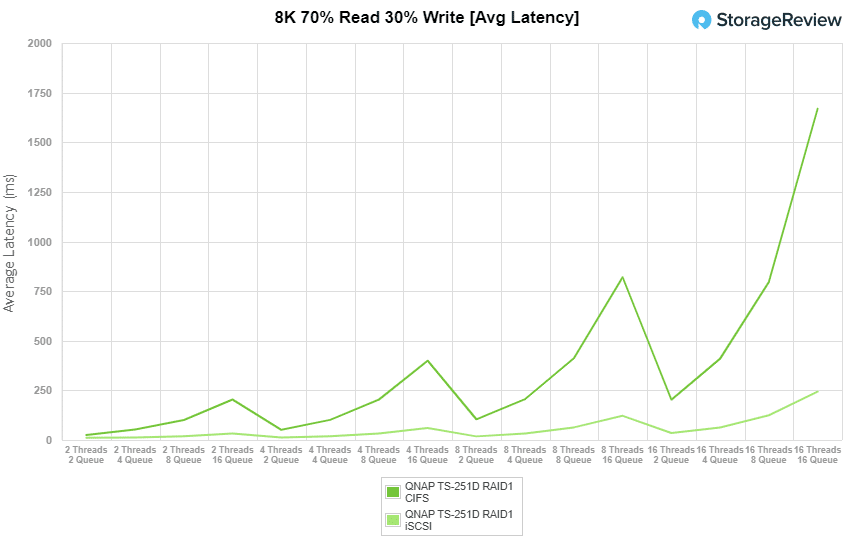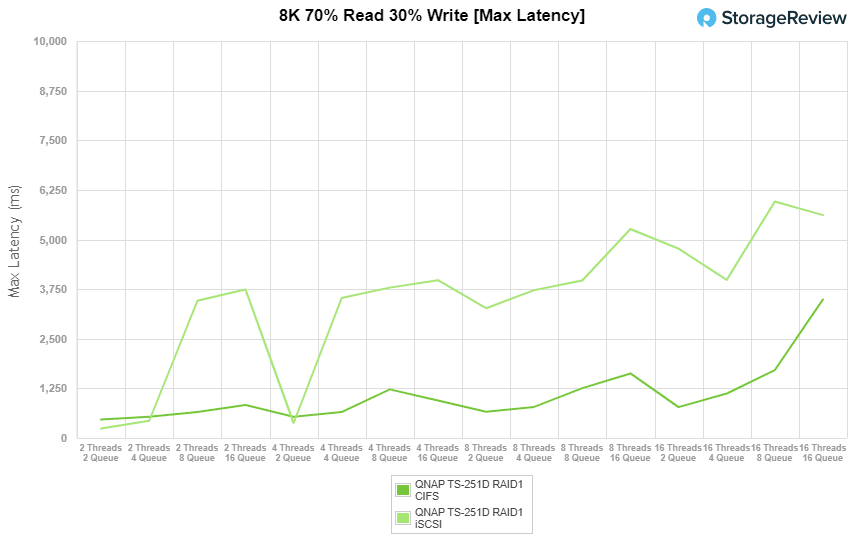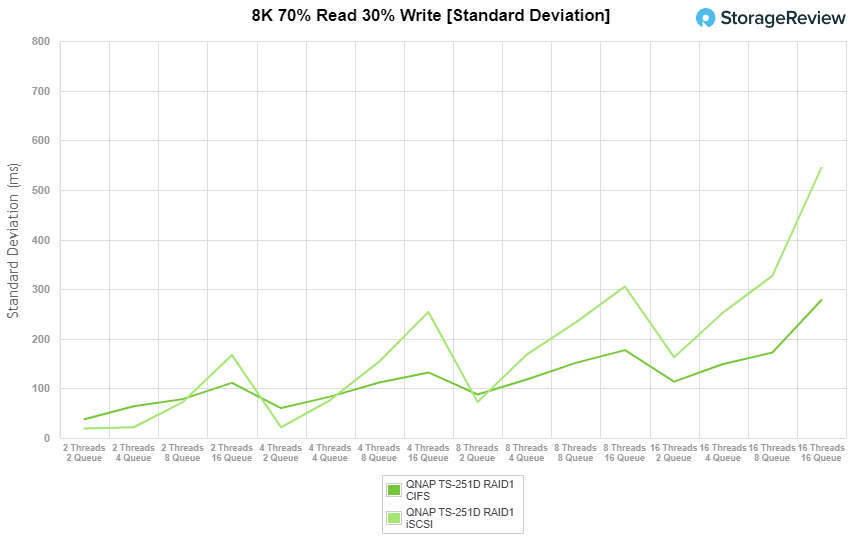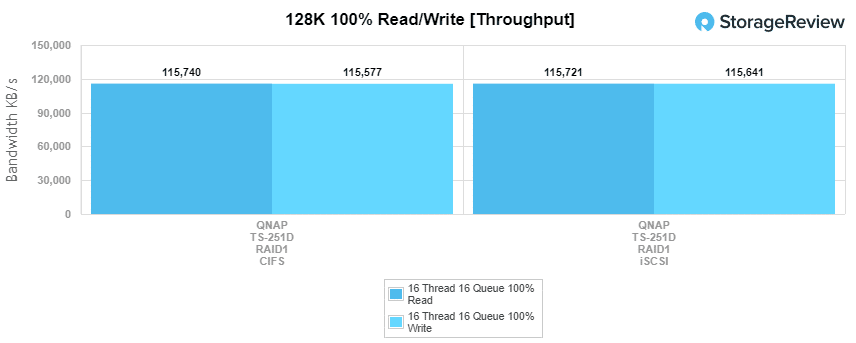The QNAP TS-251D is an entry-level 2-bay NAS that targets home users looking to set up a multimedia entertainment solution (4K media transcoding and streaming) and those who just need a device to secure their data via their own personal cloud. Released back in January, the QNAP NAS comes in two models: TS-251D-4G and TS-251D-2G. Though the 2G ships with 2GB of RAM and the 4G with 4GB, they both can be expanded to a maximum of 8GB using the two DIMM slots.
The QNAP TS-251D is an entry-level 2-bay NAS that targets home users looking to set up a multimedia entertainment solution (4K media transcoding and streaming) and those who just need a device to secure their data via their own personal cloud. Released back in January, the QNAP NAS comes in two models: TS-251D-4G and TS-251D-2G. Though the 2G ships with 2GB of RAM and the 4G with 4GB, they both can be expanded to a maximum of 8GB using the two DIMM slots.
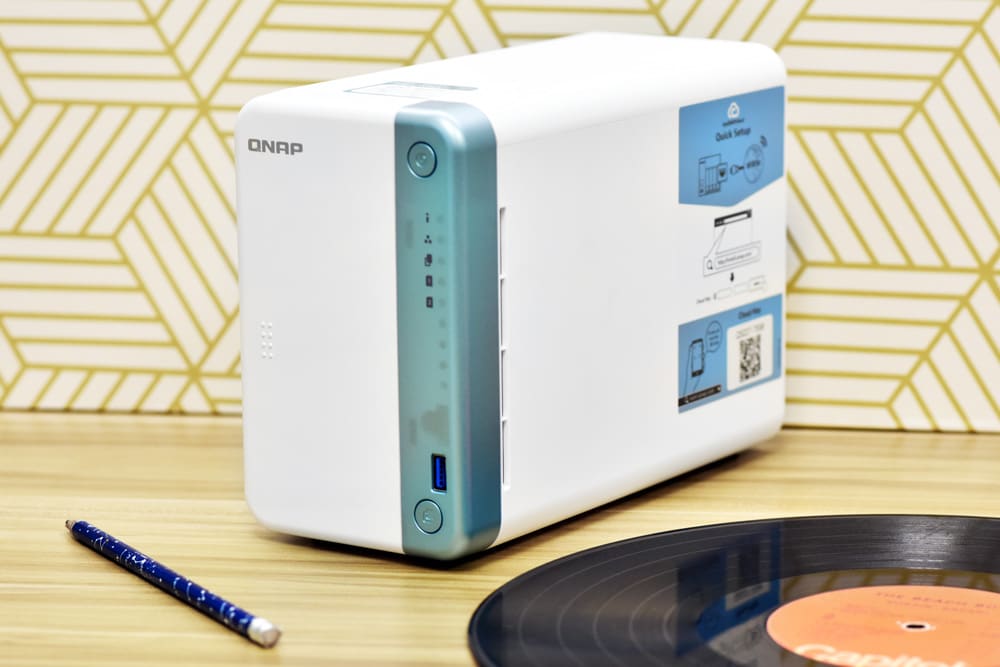
Overall, the TS-251D is another familiar release from QNAP (which is a good thing), with specs and features you normally find with their consumer-grade NAS solutions. As such, it comes with an Intel Celeron J4005 dual-core 2.0GHz processor (with burst up to 2.7 GHz), up to 8GB of DDR4 RAM as we mentioned above, one 1-Gigabit LAN port, and supports both 2.5/3.5-inch HDDs and SSDs. It also comes equipped with two USB 3.0 ports, three USB 2.0 ports, an HDMI port, and a GbE RJ45 Ethernet port. It also comes with QNAP’s USB One Touch Copy button, which copies data from a USB device to the NAS and vice versa.
The PCIe expansion is the most important component of the NAS, as it allows users to add some flexibility to to the NAS and expand of its functionality. With it, users can add a QNAP QXG – 10GbE/5GbE network expansion card for a high-speed network environment; an M.2 SSD for caching; a compatible wireless adapter; or a USB 3.1 Gen 2 (10Gbps) card for speedy file transmission.
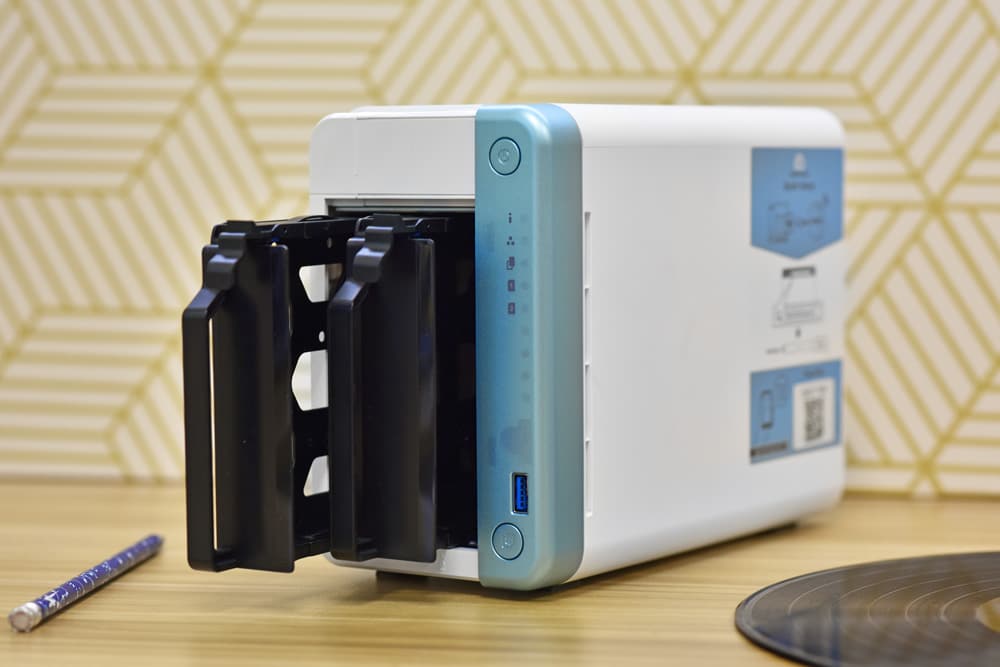
Like all QNAP devices, the TS-251D also features Intel AES-NI 256 hardware-accelerated encryption and snapshot support, the latter which allows for quick recovery of data when files accidentally get deleted, modified or altered due to a ransomware attack. Moreover, QuMagie, the company’s smart AI photo management application, groups similar photos together in albums using the technology’s integrated AI image recognition. This is certainly ideal for those who will be using the TS-251D as a file management system for all their media.
Backed by a 5-year warranty, the TS-251D starts at around $360 (currently on Amazon). Our model is outfitted with two 14TB WD Red HDDs and 4GB of DDR4 RAM.
QNAP TS-251D Specifications
| Model | TS-251D-4G | TS-251D-2G |
| CPU | Intel Celeron J4005 dual-core 2.0 GHz processor (burst up to 2.7 GHz) | |
| CPU Architecture | 64-bit x86 | |
| Graphic Processors | Intel HD Graphics 600 | |
| Floating Point Unit | Yes | |
| Encryption Engine | (AES-NI) | |
| Hardware-accelerated Transcoding | Yes | |
| System Memory | 4GB SO-DIMM DDR4 (1 x 4GB) | 2GB SO-DIMM DDR4 (1 x 2GB) |
| Maximum Memory | 8 GB (2 x 4GB) | |
| Memory Slot | 2 x SO-DIMM DDR4 For dual-DIMM configuration, you must use a pair of identical DDR4 modules. |
|
| Flash Memory | 4GB (Dual boot OS protection) | |
| Drive Bay | 2 x 3.5-inch SATA 6Gb/s, 3Gb/s | |
| Drive Compatibility | 3.5-inch SATA hard disk drives 2.5-inch SATA hard disk drives 2.5-inch SATA solid-state drives |
|
| Hot-swappable | Yes | |
| M.2 SSD Slot | Optional via a QM2 PCIe adapter | |
| SSD Cache Acceleration Support | Yes | |
| Gigabit Ethernet Port (RJ45) | 1 | |
| 5 Gigabit Ethernet Port | Expandable with an optional PCIe adapter | |
| 10 Gigabit Ethernet Port | Expandable with an optional PCIe adapter | |
| Jumbo Frame | Yes | |
| PCIe Slot | Slot 1: PCIe Gen 2 x4 PCIe bandwidth limitations will restrict the NAS 10GbE performance. |
|
| USB 2.0 port | 3 | |
| USB 3.0 port | 2 | |
| USB 3.1 Gen 2 (10Gbps) Port | Optional via a PCIe expansion card | |
| IR Sensor | (Optional QNAP RM-IR004 remote control) | |
| HDMI Output | 1, HDMI 2.0 | |
| Form Factor | Tower | |
| LED Indicators | Power/Status, LAN, USB, HDD1-2 | |
| Buttons | Power, USB copy, Reset | |
| Dimensions (HxWxD) | 6.61 × 4.13 × 8.9 inch | |
| Weight (Net) | 3.26 lbs | |
| Weight (Gross) | 5.69 lbs | |
| Operating temperature | 0 – 40 °C (32°F – 104°F) | |
| Relative Humidity | 5-95% RH non-condensing, wet bulb: 27˚C (80.6˚F) | |
| Power Supply Unit | External Power Adapter, 65W, 100-240V | |
| Power Consumption: HDD Sleep Mode | 8.08 W | |
| Power Consumption: Operating Mode, Typical | 15.25 W | |
| Fan | 1 x 70mm | |
| Sound Level | 16.7 db(A) | |
| System Warning | Buzzer | |
| Kensington Security Slot | Yes | |
Design and build
The TS-251D features a really nice design with its teal and white color scheme, which is quite different than the all-black and less rounded TS-251+ model. It uses a plastic enclosure, which is common for consumer-grade NAS solutions, and will sit firmly on a desk next a workstation.
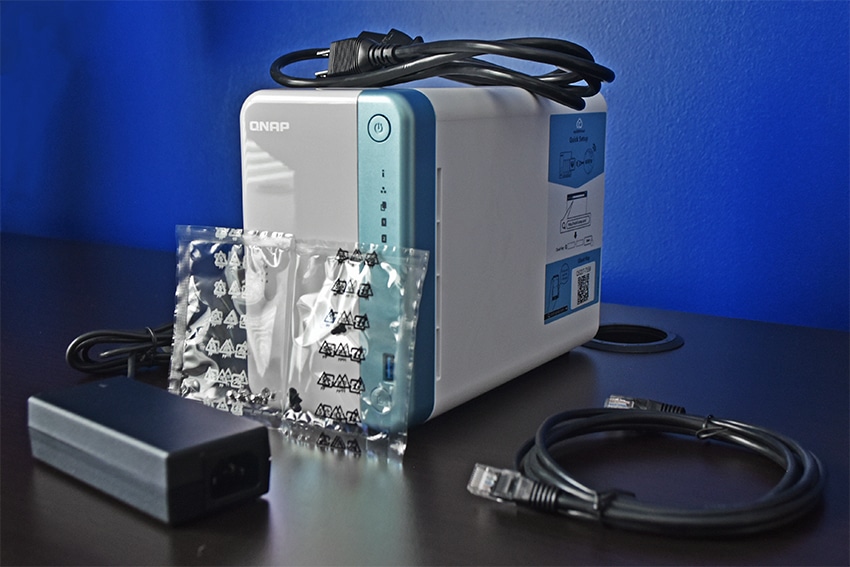
Turning the TS-251D around reveals the rest of the connectivity and button functionality: the Ethernet Port (RJ45), power input, USB 3.0 Type-A port, three USB 2.0 Type-A ports, an HDMI 2.0 port, the Kensington security slot, and the button.
To open up the NAS, simply slide the case locking mechanism down (on the side of the NAS) to release the front cover.
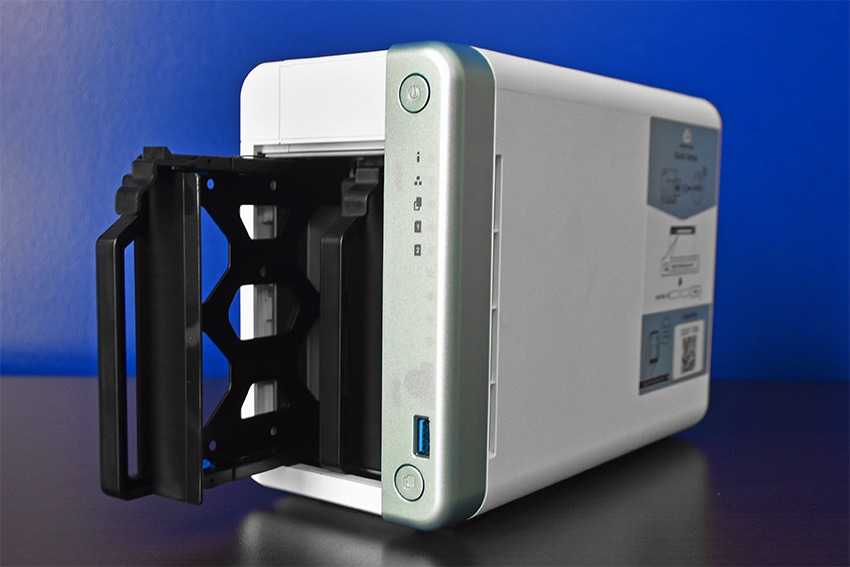
Next, just press the drive tray latch and pull it away. This gives access to the drive bays, which are removed by simply pulling them out of their slot. Remove the fastening panels, place the drive in the tray, attach the screws and you’re done.
QNAP TS-251D Performance
Review Configuration
For our testing, we configured the QNAP TS-251D in RAID1 using two WD Red HDDs.
Enterprise Synthetic Workload Analysis
Our enterprise shared storage and hard drive benchmark process preconditions each drive into steady-state with the same workload the device will be tested with under a heavy load of 16 threads with an outstanding queue of 16 per thread, and then tested in set intervals in multiple thread/queue depth profiles to show performance under light and heavy usage. Since NAS solutions reach their rated performance level very quickly, we only graph out the main sections of each test.
Preconditioning and Primary Steady-State Tests:
- Throughput (Read+Write IOPS Aggregate)
- Average Latency (Read+Write Latency Averaged Together)
- Max Latency (Peak Read or Write Latency)
- Latency Standard Deviation (Read+Write Standard Deviation Averaged Together)
Our Enterprise Synthetic Workload Analysis includes four profiles based on real-world tasks. These profiles have been developed to make it easier to compare to our past benchmarks as well as widely-published values such as max 4k read and write speed and 8k 70/30, which is commonly used for enterprise drives.
- 4K
-
- 100% Read or 100% Write
- 100% 4K
- 8K 70/30
-
- 70% Read, 30% Write
- 100% 8K
- 8K (Sequential)
- 100% Read or 100% Write
- 100% 8K
- 128K (Sequential)
- 100% Read or 100% Write
- 100% 128K
First up are our enterprise workloads, where we measured a long sample of random 4K performance with 100% write and 100% read activity. First, we look at IOPS, where the TS-251D showed a performance of 153 IOPS read and 804 IOPS write in CIFS and 1,023 IOPS read and 938 IOPS write in iSCSI.
Moving on to 4K average latency, the new QNAP NAS hit 1,659.91ms and 318.13ms for reads and writes in CIFS, while iSCSI reached 250ms and 272.8ms for reads and write, respectively.
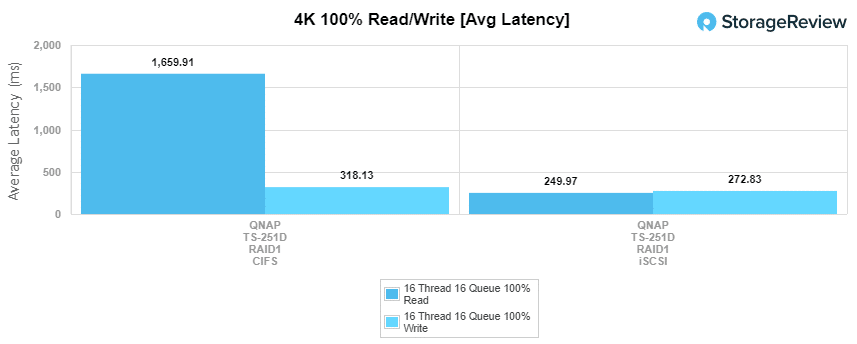
For our last 4K test we looked at standard deviation, where we saw the TS-251D with 156.02ms read and 116.87ms write in CIFS, while iSCSI posted 189.66ms read and 438.60ms write.
Our next benchmark measures 100% 8K sequential throughput with a 16T16Q load in 100% read and 100% write operations, which showed near identical results in both protocols. In CIFS, the TS-251D was able to hit 14,313 IOPS read and 13,231 IOPS write, while iSCSI showed 14,335 IOPS read and 13,700 IOPS write.
Compared to the fixed 16 thread, 16 queue max workload we performed in the 100% 4K write test, our mixed workload profiles scale the performance across a wide range of thread/queue combinations. In these tests, we span workload intensity from 2 thread/2 queue up to 16 thread/16 queue. In throughput, the QNAP TS-251D posted a range of 369 IOPS to 1,051 IOPS in iSCSI and 160 IOPS to 153 IOPS in CIFS.
Looking at average latency performance, iSCSI continued to significantly outperform CIFS. Here, the QNAP NAS showed 24.78ms at burst and finished at 1,668.56ms, while iSCSI showed 10.82ms at burst and ended at 243.27ms.
For maximum latency, we saw 463.14ms to 3,487.36ms in CIFS and 238.01ms to 5,614.41ms in iSCSI.
Looking at standard deviation, the TS-251D posted 37.93ms to 278.04ms in CIFS and 19.22ms to 544.3ms in iSCSI.
The last synthetic benchmark is our 128K test, which is a large-block sequential test that shows the highest sequential transfer speed for a device. In this workload scenario, the TS-251D showed identical reads and writes across the board: 115.7MB/s read and 115.6MB/s write in CIFS and 115.7MB/s read and 115.5MB/s write in iSCSI.
Conclusion
Unsurprisingly, the TS-251D is another solid 2-bay NAS release from QNAP. Though specced similarly to the TS-251+, it has some notable differences: it has more flash memory, uses DDR4 RAM, and comes equipped with a PCIe Gen 2 x4 slot. The latter option allows users to expand the functionality of the NAS, such as adding a QM2 card, which can be outfitted with an M.2 SSD for caching or 10GbE card for high-speed connectivity; a compatible wireless adapter; or a USB 3.1 Gen 2 (10Gbps) card to increase file transmission speeds. It also has some pretty decent performance, which is made possible via its Intel Celeron J4005 dual-core 2.0GHz processor (with burst up to 2.7 GHz), up to 8GB of DDR4 RAM, and 1-Gigabit LAN port.
To gauge its performance, we tested the TS-251D in both CIFS and iSCSI configurations populated with two 14TB WD Red HDDs. In throughput, the QNAP NAS showed its best 4k and 8k performance under iSCSI connectivity, with highlights of 1,023 IOPS read and 938 IOPS write, and 14,335 IOPS read and 13,700 IOPS, respectively. Under CIFS, the TS-251D posted 153 IOPS read and 804 IOPS write (4k), and 14, 313 IOPS read and 13,231 IOPS write (8k). During the 128k benchmark, the TS-932X recorded near identical results, showing 115.7MB/s read and 115.6MB/s write in CIFS, and 115.7MB/s read and 115.5MB/s write in iSCSI.
Overall, the TS-251D is a great option for those who need a personal cloud/back up solution at home or for users looking to set up small multimedia center. And at $360 for the (diskless) 4GB RAM model, consumers can do this for a relatively affordable price point too.
Engage with StorageReview
Newsletter | YouTube | Podcast iTunes/Spotify | Instagram | Twitter | Facebook | RSS Feed

